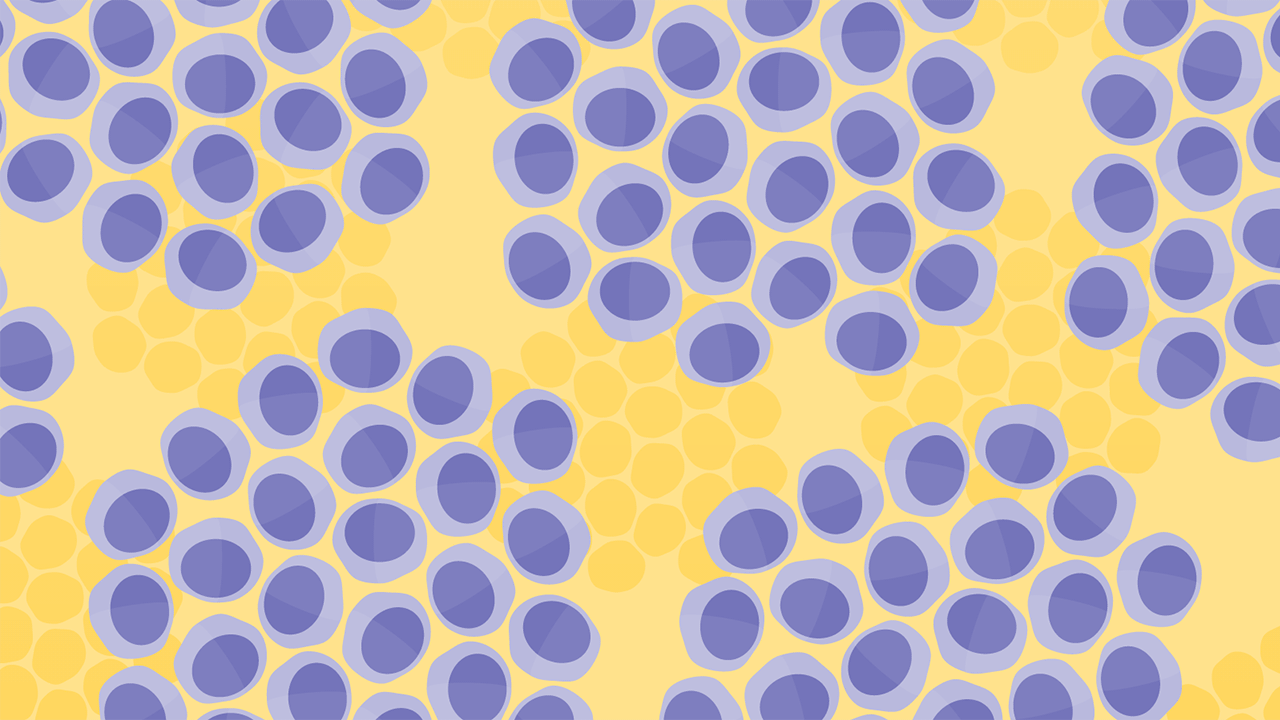Subtipos de linfoma: você conhece a diferença?
O linfoma não Hodgkin (LNH) é um tipo de câncer no sangue que começa nas células brancas do sangue chamadas linfócitos, que são componentes importantes do sistema imunológico.¹ Existem mais de 60 tipos diferentes de LNH,² que também pode ser classificado como indolente (de crescimento lento) ou agressivo (de crescimento rápido), dependendo da rapidez de crescimento do câncer.¹ Dois dos tipos mais comuns, o linfoma folicular e o linfoma difuso de grandes células B (LDGCB), são muito diferentes em termos de como, quando e onde se desenvolvem, e como são tratados.
Quais são os subtipos mais comuns de LNH?
Quais são as diferenças nas células cancerosas entre os subtipos?
Com que rapidez a doença progride?
Quando é feito, geralmente, o diagnóstico?
Qual é o curso evolutivo da doença?
Qual é a necessidade clínica não atendida?
References
Lymphoma research foundation. [Internet; cited April 2022]. Available at: https://www.lymphoma.org/aboutlymphoma/
Swerdlow SH, et al. WHO classification of tumours of haematopoietic and lymphoid tissues. In: World Health Organization Classification of Tumours. Lyon, France: IARC; 2017.
American Cancer Society. What is Non-Hodgkin Lymphoma. [Internet; cited April 2022]. Available at: https://www.cancer.org/cancer/non-hodgkin-lymphoma/about/what-is-non-hodgkin-lymphoma.html
Cancer.Net. Leukemia – Lymphoma –Non-Hodgkin: Subtype. [Internet; cited April 2022]. Available from: https://www.cancer.net/cancer-types/lymphoma-non-hodgkin/subtypes.
Globocan 2020. World fact sheet. [Internet; cited April 2022]. Available at: http://gco.iarc.fr/today/data/factsheets/populations/900-world-fact-sheets.pdf
Rare Diseases. [Internet; cited April 2022] Available at: https://rarediseases.org/rare-diseases/follicular-lymphoma/.
Lymphoma Action. [Internet; cited April 2022]. Available at: https://lymphoma-action.org.uk/sites/default/files/media/documents/2018-06/LYMweb0018DLBCL2016v2.2.pdf.
Lymphoma Research Foundation. [Internet; cited April 2022]. Available at: http://www.lymphoma.org/site/pp.asp?c=bkLTKaOQLmK8E&b=6300155Last accessed September 2016
UpToDate. Patient education: Diffuse large B cell lymphoma in adults (Beyond the Basics). [Internet ; cited April 2022]. Available at: https://www.uptodate.com/contents/diffuse-large-b-cell-lymphoma-in-adults-beyond-the-basics.
Rovira J et al. Prognosis of patients with diffuse large B cell lymphoma not reaching complete response or relapsing after frontline chemotherapy or immunochemotherapy. Ann Hematol. 2015; 94: 803–812.
National Institute for Health and Clinical Excellence Review of TA 110:rituximab for the first-line treatment of stage III-IV follicular lymphoma. [Internet; cited April 2022]. Available at: https://www.nice.org.uk/guidance/ta243/documents/follicular-lymphoma-rituximab-review-lymphoma-association2.
Lymphoma Research Foundation. [Internet; cited April 2022]. Available at: https://www.lymphoma.org/aboutlymphoma/nhl/fl/relapsedfl/.
Maurer, MJ et al. Event-free survival at 24 months is a robust end point for disease-related outcome in diffuse large B-cell lymphoma treated with immunochemotherapy. J Clin Oncol. 2014; 32: 1066-73.
Maurer MJ, Habermann TM, Shi Q, et al. Progression-free survival at 24 months (PFS24) and subsequent outcome for patients with diffuse large B-cell lymphoma (DLBCL) enrolled on randomized clinical trials. Ann Oncol. 2018;29:1822-1827.
Fowler N. Role of Maintenance Rituximab (Rituxan) Therapy In the Treatment of Follicular Lymphoma. Pharmacy and Therapeutics; 2011; 36:590-598
Lymphoma Action. Diffuse large B-cell lymphoma. [Internet; cited April 2022]. Available at: https://lymphoma-action.org.uk/types-lymphoma-non-hodgkin-lymphoma/diffuse-large-b-cell-lymphoma.






:quality(90)/)
:quality(90)/)



